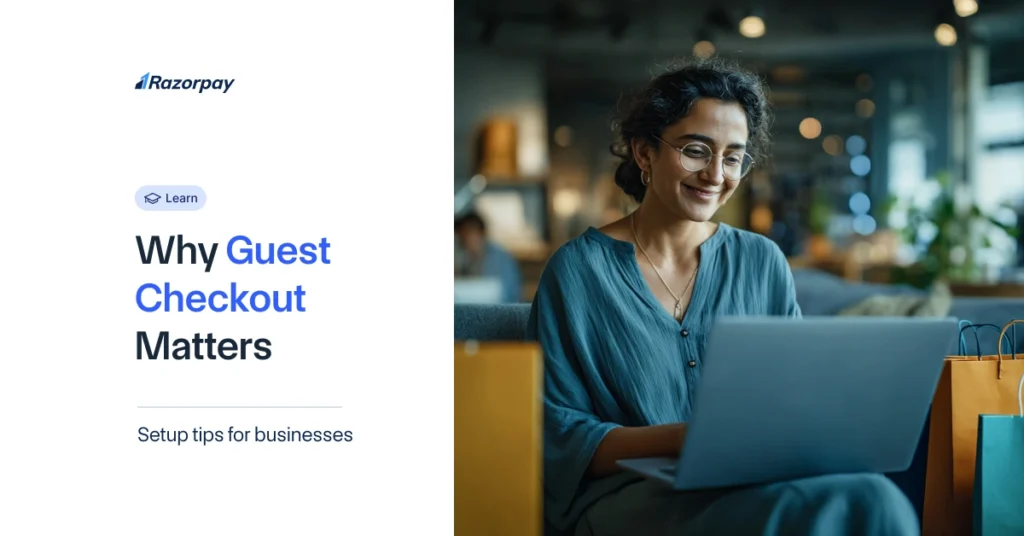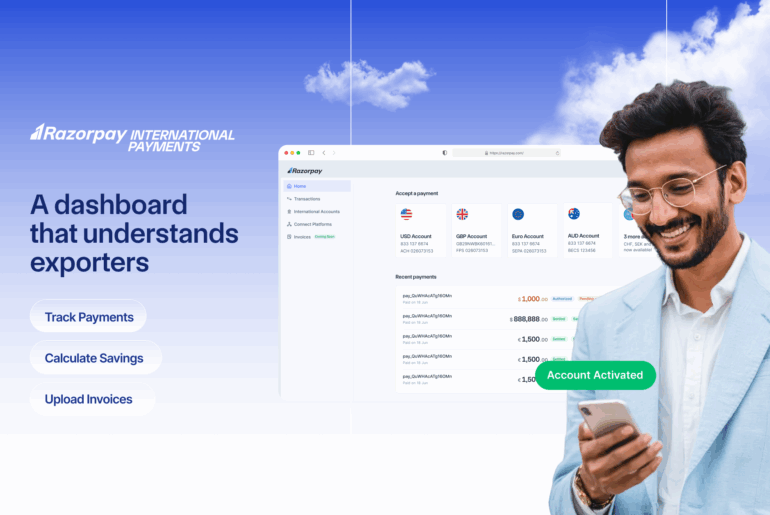Did you know that around 70% of online shopping carts are abandoned? One major reason is that people don’t want to create an account just to buy something small. Many shoppers just want to pay and get on with their day.
If you run an online store, this means you’re losing easy sales. Adding a simple guest checkout can help you keep more of those buyers. Many big e-commerce brands use guest checkout to cut drop-offs and boost sales.
In this article, you’ll see what guest checkout means, when to use it, and how to set it up so more customers complete their orders without hassle.
Table of Contents
What Is a Guest Checkout?
Guest checkout is a simple option in your online store that lets customers buy products without creating an account. Instead of forcing new visitors to sign up, you allow them to complete their purchase as quickly as possible. This works well for shoppers who prefer speed and privacy over registration.
Example of Guest Checkout
Imagine you run an online fashion store. A new customer wants to buy a pair of shoes. With guest checkout, they add the shoes to their cart, enter their address and payment details, and place the order — all without logging in or signing up.
This guest checkout example shows how you remove friction. The buyer doesn’t need to remember a password or verify an email. They make ad hoc payments and get an express checkout experience.
Why Is Guest Checkout Important?
Guest checkout is important because it removes unnecessary steps that often stop buyers from finishing a purchase. Studies show 24% of customers, especially first-time visitors, abandon their carts if they’re forced to create an account just to buy one product. By giving them the option to check out as a guest, you reduce these drop-offs and abandoned carts.
When you offer a guest checkout option, you make the buying process faster. Shoppers can complete their order without extra forms or emails. This smooth experience boosts your Conversion Rates and keeps customers happy.
When Is Guest Checkout Beneficial?
Guest checkout works best when you want to make buying simple for first-time customers. Many shoppers visit your site just once to buy a single item. Forcing them to sign up can push them away. With guest checkout, they can finish their order quickly and leave satisfied.
Guest checkout is also the right choice for shoppers who don’t want to store their details online. Some buyers value privacy and prefer to enter their details only once. It’s also useful if you sell products that people don’t buy often — like furniture, gifts, or seasonal items.
During sales, festivals, or seasonal shopping rushes, guest checkout helps speed up the process. Shoppers want fast, hassle-free purchases. By keeping your ecommerce guest checkout flow simple and PCI compliant, and by using reliable payment gateways, you keep transactions smooth and build trust without slowing anyone down.
When Is a Customer Account Beneficial?
A customer account is ideal when you want to give repeat customers a faster, smoother checkout. With an account, buyers can save their payment information and addresses, making future purchases quicker and easier.
Accounts also make sense if you run loyalty programmes or offer perks for repeat purchases. Customers can track reward points, get special offers, and enjoy express checkouts.
Storing account data helps your buyers manage their order history, check delivery status, and handle returns smoothly. It’s also useful for subscriptions or recurring payments, where buyers want quick reorders without entering details again.
In short, customer accounts work best when you want to reward loyal buyers, speed up future purchases, and handle returns and repeat orders easily.
How to Implement Guest Checkout?
1. Assess the Impact on Your Business
Before you add guest checkout, understand how it can affect your sales. Guest checkout usually lifts conversion rates by removing steps that frustrate buyers. Track key metrics like cart abandonment, Conversion Rates, and repeat purchase behaviour before and after you launch guest checkout.
Run A/B tests to compare your current checkout with the new guest checkout option. This shows you exactly how it impacts your ecommerce performance and helps you refine the flow for your customers.
2. Pick the Right Technology Platform
Choose an ecommerce platform that supports guest checkout out of the box or offers it as an add-on. Platforms like Shopify, WooCommerce, and Magento have flexible options to set up a guest checkout ecommerce flow.
Make sure the ecommerce platform you choose integrates well with your cart, payment gateways, and back-end systems. This ensures orders from guest checkout get processed smoothly and reach your customers on time.
3. Create a User-Friendly Checkout Process
Design your guest checkout to be simple and fast. Use clear steps, easy forms, and keep clicks to a minimum. Offer various trusted payment methods so customers can pay the way they prefer.
A good guest checkout experience builds trust. When shoppers see how easy it is to buy from you, they’re more likely to return and create an account for future recurring payments. Many ecommerce guest checkout examples prove that when you get the UX right, you keep customers coming back.
Best Practices for Guest Checkout
1. Always Provide the Option for Guest Checkout
Make sure your online store clearly shows the guest checkout option as soon as a customer starts the checkout process. Many buyers decide whether to buy or leave based on how easy it is to pay.
Always give your shoppers two clear choices: continue as a guest or log in if they’re a returning customer. This simple step removes friction for new buyers while keeping things convenient for repeat ones. By offering both options upfront, you keep your checkout flow flexible.
2. Communicate the Benefits of Each Checkout Option
Make it clear why each option helps your customers. Highlight that guest checkout is fast and hassle-free for buyers who want a quick purchase. At the same time, explain that creating an account saves payment details and makes future orders faster.
Add a short note at checkout about how an account can help with tracking orders, returns, or repeat purchases. Include details in your FAQs about how you keep customer data secure and PCI compliant. This builds trust and helps shoppers choose what works best for them.
3. Keep the Guest Checkout Process as Simple as Possible
Keep your guest checkout flow short and clear. Ask only for the details you really need — like shipping address and payment info — to help customers finish quickly.
Use simple, clear language at every step so buyers don’t get confused or stuck.
Offer multiple payment options through trusted, PCI compliant payment gateways. This makes it easier for shoppers to pay the way they prefer, cuts friction, and helps you lift Conversion Rates.
4. Ensure Strong Security Measures to Prevent Fraud
Security is critical for guest checkout, especially when you’re dealing with first-time buyers who don’t have an account with you yet. Use strong encryption methods like SSL or TLS to protect customer data during transactions.
Work only with secure, trusted payment gateways to handle card payments safely. Make sure your checkout process is PCI compliant and display this clearly to reassure shoppers.
Show security badges and clear policies on how you handle data. This builds trust and makes customers feel safe using guest checkout on your site.
FAQs
Q1. Will I lose customer data if I offer guest checkout?
No. You’ll still collect basic details like name, email, and address to process orders and send updates.
Q2. Are there any risks associated with guest checkout?
The main risk is fewer repeat purchases, but you can manage this by inviting customers to create an account after their purchase.
Q3. Should I encourage account creation if guest checkout is available?
Yes. Let customers check out as guests but highlight the benefits of creating an account, like faster future checkouts and easy order tracking.
Q4. Is guest checkout a good idea?
Yes. Guest checkout makes buying faster and easier, reduces cart abandonment, and helps boost Conversion Rates, especially for first-time or one-time buyers.
Q5. What is a guest checkout transaction?
A guest checkout transaction is a purchase completed without creating an account. The customer enters only the needed details, pays, and checks out quickly without logging in.
Q6. Which factors impact guest checkout?
Clear checkout flow, secure payment gateways, PCI compliance, easy form fields, and visible guest checkout options all impact how well guest checkout works and how many buyers complete their purchase.
Q7. How can guest checkout be improved?
You can improve guest checkout by making it easy to find, keeping the steps short, and asking only for essential details. Use secure, trusted payment gateways, follow PCI compliance, and A/B test your flow to see what works best.


